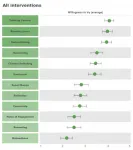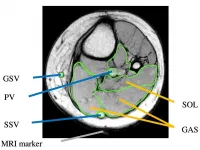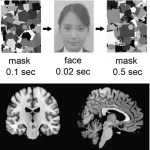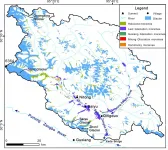(Press-News.org) A new study from the UBC Sauder School of Business finds a subtle shift in organ donor messaging can lead to a big boost in registration.
Organ donation saves countless lives every year, and most people think it's the right thing to do -- but when it comes to people actually registering to donate, the numbers around the world are surprisingly low. This is particularly so in countries that rely on informed consent and require people to learn about organ donation before they opt-in to register as a donor.
In fact, in Canada, just 32 per cent of people have registered to become organ donors.
Transplant agencies have tried a range of strategies to increase donation levels, including the introduction of in-hospital organ donation coordinators, greater public education and marketing campaigns.
Some campaigns emphasize how low organ donation rates are and plead with people to sign up, hoping the meagre numbers will motivate people to help. In marketing, this is known as a low descriptive norm. Others take the opposite tack, and emphasize how positive people feel about organ donation, which encourages people to conform to the expectations of others, a high injunctive norm. For example, one UK government advertisement stated, "96 per cent believe donating organs is the right thing to do."
But what happens when you combine the two approaches? According to the new study, titled Everybody Thinks We Should But Nobody Does: How Combined Injunctive and Descriptive Norms Motivate Organ Donation Registration, highlighting the incongruence between what people believe and what they do -- or don't do -- can spur their willingness to register.
According to UBC Sauder PhD candidate Rishad Habib (she/her), who co-authored the study with UBC Sauder colleagues Dr. Katherine White and Dr. JoAndrea Hoegg, by focusing on how low registration numbers are, some agencies may be unknowingly alienating potential donors.
"If you tell people that nobody is doing something, does that really motivate them to register?" says Habib. "By communicating that the numbers are low, they might be inadvertently communicating that it's not very important, or not worthwhile."
On the flipside, if marketers focus on how many people support organ donation, they risk making people feel like they don't need to act.
For the study, the researchers tested all three approaches -- focusing on the low rates, the high support, and a combination of the two -- in online surveys, lab surveys and in a public field study.
In one study, research assistants set up a table at the UBC student centre and regularly rotated banners encouraging passersby to register. They also asked people if they were already registered, and if they weren't, they would show them an iPad displaying the different messaging on the banners.
For example, one read, "Only 20 per cent of Canadians are registered as organ donors" while another said, "90 per cent of Canadians believe people should register as organ donors." The people were then offered the chance to sign up.
Roughly 20 per cent of people who were given only the individual messages signed up; but when people were given the combined message, registrations jumped to 33 per cent, which represents an almost 70 per cent increase -- a leap that could help save lives.
"It motivates responsibility," explains Habib. "When the two messages are combined, people think, 'No one's doing it, but it's important. So I need to step up and register."
Habib hopes the findings, which were published in the Journal of Consumer Psychology, will help transplant organizations create more effective communication strategies; in fact, the study has already influenced at least one organ donation registry's online and TV campaigns.
"You could apply this to other situations where there's a positive behaviour, but there aren't a lot of people doing it -- like mask wearing at the start of the pandemic," she says. "If the behaviour levels are low, but the support for the behaviour is high, then it makes sense to communicate both."
INFORMATION:
A forest looks like a hotbed of randomness, with trees and plants scattered in wild and capricious diversity. But appearances can be deceiving, say a trio of complexity researchers at the Santa Fe Institute (SFI). Underneath that apparent messiness lurk extraordinary regularities, governed by the biological mechanisms that drive universal forces of growth, death, and competition.
In a paper published April 9 in the journal PNAS, the SFI group, led by Program Postdoctoral Fellow and now Complexity Science Hub Vienna Postdoctoral Scientist Eddie Lee, describes a new framework that can reproduce those spatial and temporal patterns that emerge in places and ...
The internet seems like the place to go to get into fights. Whether they're with a family member or a complete stranger, these arguments have the potential to destroy important relationships and consume a lot of emotional energy.
Researchers at the University of Washington worked with almost 260 people to understand these disagreements and to develop potential design interventions that could make these discussions more productive and centered around relationship-building. The team published these findings this April in the latest issue of the Proceedings of the ACM in Human Computer Interaction Computer-Supported Cooperative Work.
"Despite the fact that online spaces are often described as toxic and polarizing, ...
Chronic lower-limb edema (CLE) -- the permanent accumulation of fluid in the leg -- often occurs in elderly people. The condition leads to various physical and mental problems, including difficulty in walking or moving, fatigue and anxiety. One cause of CLE is the lack of physical activity, which is associated with a decrease in muscle pump action. The latter refers to the leg muscle's acting as a blood pump: when contracted, the muscle squeezes veins together, forcing blood to flow. The question whether muscle pump action systematically changes with age has not been thoroughly investigated; now, Junko Sugama from Kanazawa University and colleagues have addressed this issue. In addition, they studied how leg posture affects muscle pump action.
For their study, Sugama ...
Osaka, Japan - As humans, we each have a powerful ability to easily recognize our own face. But now, researchers from Japan have uncovered new information about how our cognitive systems enable us to distinguish our own face from those of others, even when the information is presented subliminally.
In a study published this month in Cerebral Cortex, researchers from Osaka University have revealed that a central element of the dopamine reward pathway in the brain was activated when participants were subliminally shown images of their face. This provides new clues regarding the underlying processes of the brain involved in self-facial recognition.
When we are ...
Southeastern Tibet is one of the most glaciated regions on the Tibetan Plateau both at present and during the Quaternary. Numerical dating of glacial deposits has allowed the establishment of a provisional chronology of Quaternary glacial fluctuations in this region, with the oldest glaciation (Guxiang Glaciation) occurring in marine oxygen isotope stage 6 (MIS-6). However, glaciations predating MIS-6 have been identified at many locations on the Tibetan Plateau and its surrounding mountains, posing the question: as a major glaciation center both at present and during the Quaternary, did a glaciation prior to MIS-6 ever occur in southeastern Tibet?
Zhou et al. (2021) provide evidence for a glacier advance in the Bodui Zangbo River ...
Japan -- Next to cat videos, watching small and cuddly rabbits is probably one of the most popular internet pastimes. Plus they appear in literature as well as in traditional folklore spanning numerous cultures, thanks likely to the fact that rabbits reside on every continent except Antarctica.
Yet despite their ubiquity, lagomorphs -- including rabbits, hares, and pikas -- are rather limited in their size diversity. Compare this to their evolutionary sisters, the rodents, which vary in size from the four-gram pygmy mouse to capybaras weighing as much as 50 kilograms.
So why don't we see rabbits rivaling the sizes of horses?
To answer this question, a research team ...
With its more than 40 million articles in 301 different languages, Wikipedia is one of the largest human collaboration efforts in history. One of the main pillars on which this wish to bring together the sum of all knowledge is based is the achievement of a neutral space. However, several studies suggest that the site suffers from a persistent gender bias as regards both content and the composition of its community. An analysis of the gender gap in the Spanish-language version of Wikipedia by an interdisciplinary team at the UOC has revealed that only 11.6% of its registered editors are women.
According to the new study, which has been published in the journal PLOS ONE, the difference could be partially due to female editors being less ...
Over the last 200 years, researchers have worked towards understanding the global distribution of species and ecosystems. But so far even the basic knowledge on the global geography of genetic diversity was limited.
That now changes with a recent paper from Globe Institute. Professor David Nogues Bravo and his team has spent the last eight years combining data from scientific gene banks with scenarios of future climate and land-use change. The result is the first ever global assessment of how it will impact the genetic diversity of mammals, e.g. when tropical forests are converted to agricultural land.
'Our study ...
Singapore, 19 April, 2021 - Researchers at the Future Urban Mobility (FM) Interdisciplinary Research Group (IRG) at Singapore-MIT Alliance for Research and Technology (SMART), MIT's research enterprise in Singapore, have created a synthetic framework known as theory-based residual neural network (TB-ResNet), which combines discrete choice models (DCMs) and deep neural networks (DNNs), also known as deep learning, to improve individual decision-making analysis used in travel behaviour research.
In this research paper, Theory-based residual neural networks: A synergy of discrete choice models and deep neural networks, ...
The production of nanomaterials involves self-assembly processes of functionalized (organic) molecules on inorganic surfaces. This combination of organic and inorganic components is essential for applications in organic electronics and other areas of nanotechnology.
Until now, certain desired surface properties were often achieved on a trial-and-error basis. Molecules were chemically modified until the best result for the desired surface property was found. However, the processes controlling the self-assembly of molecules at interfaces are so complex ...








